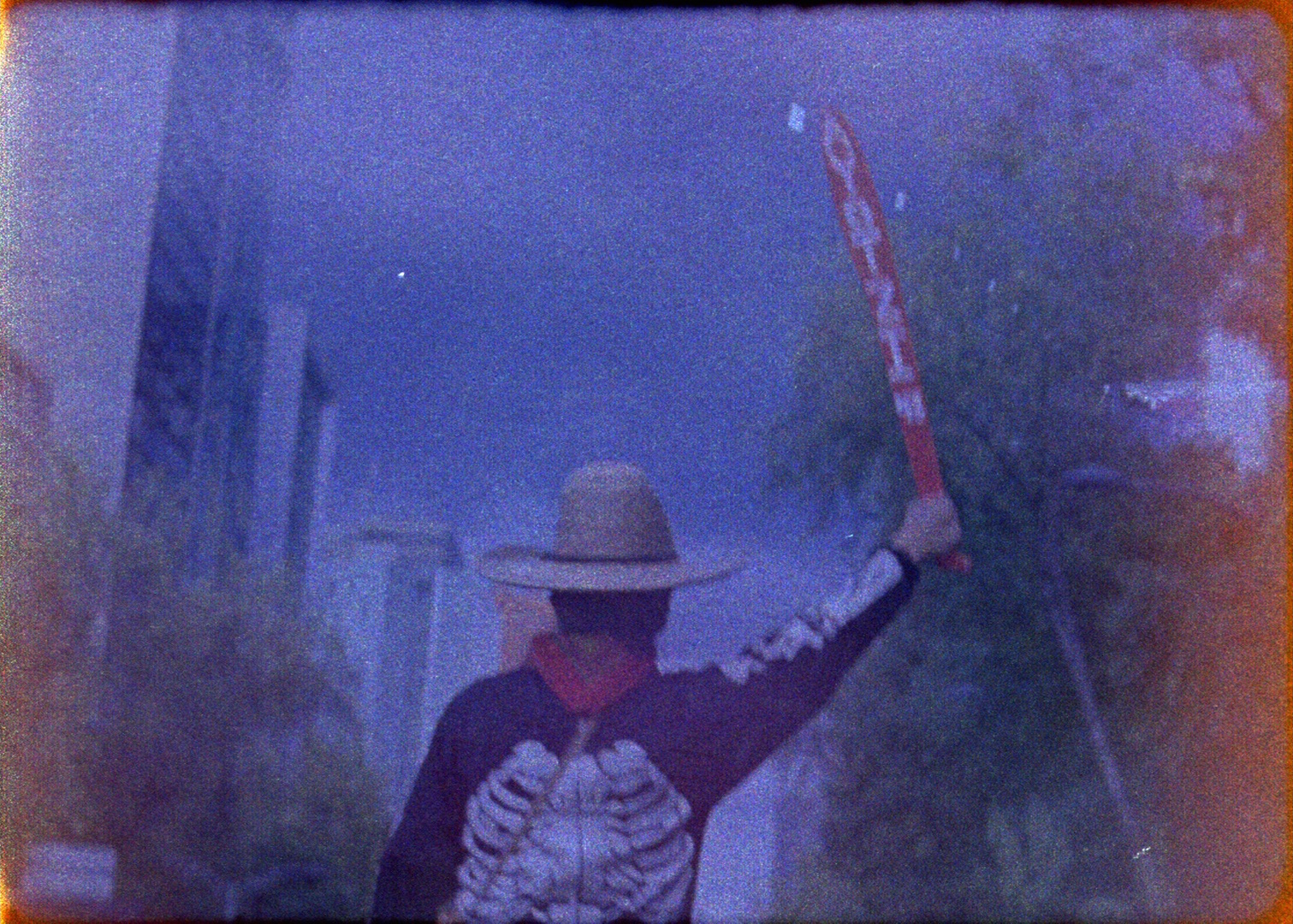presented by San Francisco Cinematheque and San Francisco Museum of Modern Art
anticipated artists in person: representatives of Colectivo Los ingrávidos
pictured above: The Sun Quartet, part 2: San Juan River (2017) by Colectivo Los ingrávidos
Join our Facebook event.
ADMISSION DETAILS
Single Screening Admission: $12 general/$10 Cinematheque and SFMOMA members with member code. Single Screening advance tickets available here.
CROSSROADS festival day pass (Saturday & Sunday only): $25
CROSSROADS festival day pass provides admission to all daily CROSSROADS screenings and general admission access to SFMOMA galleries (including CROSSROADS screenings in SFMOMA’s Gina and Stuart Peterson White Box Gallery). Sunday, June 10 CROSSROADS festival day pass available here.
NOTE: Admission to the special exhibition René Magritte: The Fifth Season is not included with the festival day pass but can be purchased here.
Colectivo Los ingrávidos’ Sun Quartet is a solar composition in four movements, a political composition in four natural elements addressing the 2014 disappearance of forty-three students of Iguala, including ruminations on the prelude and aftermath of this devastating and galvanizing national event; a perceptive experience of the current Mexican war and an assertive series of intensely visual cine-poems. CROSSROADS program 9 includes the Quartet’s concluding three parts (NOTE that The Sun Quartet, part 1 opens CROSSROADS on June 8—information here) as well as films of dark tropical visions, appropriated fútbol mascots and the looming spectre of Bitcoin.
SCREENING:
Tupianas (2016) by Marcos Bonisson & Khalil Charif (Brazil); digital video, color, sound, 6 minutes, exhibition file from Khalil Charif bay area premiere
Super-8 filmed in Brazil during the ‘70s. It’s a reflection about the idea of Tupi, by elaborating a non-linear narrative with a collage of “antropofagic images,” presenting the body and space as topology of desires, experimenting the choice in life, and language of the essential, instead of the accessory. (Khalil Charif)
Intertropical Vision (2018) by Adriana Vila Guevara (Spain/Venezuela); 16mm, 2018, color, sound, 4 minutes, print from the maker U.S. premiere
Contrary to the standardization of a single hegemonic point of view, the “center” in the tropics is not the whole. It is the starting point of a powerful range of visions. This is a trip into the core of its multiple indomitable condition. (Adriana Vila Guevara)
Jícaro (2016) by Rosa John (Austria); digital video, b&w, silent, 3 minutes, exhibition file from maker U.S. premiere
A woman is moving an object. She might be a dancer, a scientist or a space traveller. The object could be a ball, a fruit, a planet—a secret in a nutshell. (Rosa John)
7FF on¢idia (2016) by Ж (Brazil); digital video, color, sound, 8 minutes, exhibition file from maker bay area premiere
In ancient China the skin of the tiger was the representation of “continuous changing;” in Mayan world through the path of Bolom Chon (Jaguar) they could read constellations: the dance of cosmos. Fluxes are grouped in the film; spotted-jaguar, “7 pancadas,” speckled plants, ounce (oz), “golden spider.” Matter-energy-information varies. Side by side communication, surplus value of code. Commodities, Bitcoin, mountains of data. 7FF on¢idia: real impossibilia of capital life. (Ж)
The Sun Quartet, part 2: San Juan River (2017) by Colectivo Los ingrávidos (Mexico); digital video, color, sound, 9 minutes, exhibition file from the makers world premiere
The Sun Quartet is a solar composition in four movements, political composition in four natural elements, kinematic composition in four body mutations: a sun stone where youth blooms in protest, a river overflowing the streets, the burning plain rising in the city. And finally the clamor of the people who after the night of September 26, 2014 shook Mexico. The massive disappearance of 43 students of Ayotzinapa opened a breach in the Mexican political body. The Sun Quartet is a cinematographic composition of this event. A perceptive experience of the current Mexican war.
The Sun Quartet, part 2: San Juan River: In the river San Juan were found the bone fragments of Alexander Mora Venancio and Jhosivani Guerrero de la Cruz, two of the 43 missing students from Ayotzinapa. The official version said that the river San Juan was the last place where the remains were seeded. This is the experience of a river that carries their names, a river that cries and overflows the streets. (Colectivo Los ingrávidos)
The Sun Quartet, part 3: Conflagration (2017) by Colectivo Los ingrávidos (Mexico); digital video, color, sound, 17 minutes, exhibition file from the makers world premiere
After the massive disappearance of 43 students of Ayotzinapa the night of September 26, 2014 the burning plain rising in the city has affected the celluloid. (Colectivo Los ingrávidos)
The Sun Quartet, part 4: November 2/Far from Ayotzinapa (2017) by Colectivo Los ingrávidos (Mexico); digital video, color, sound, 23 minutes, exhibition file from the makers world premiere
The clamor of the people after the disappearance of 43 students of Ayotzinapa. The Mexican poet David Huerta wrote a poem called Ayotzinapa on November 2, a date is a very important date of in Mexico, because is the celebration of “Day of the Dead.” The poem is about the experience of current Mexican war. (Colectivo Los ingrávidos)
CROSSROADS 2018 is generously supported by: the National Endowment for the Arts, the Fleishhacker Foundation, San Francisco Hotel Tax Fund/Grants for the Arts, the Willow Foundation, the Andy Warhol Foundation for the Visual Arts and Cinematheque’s Members and Donors.
